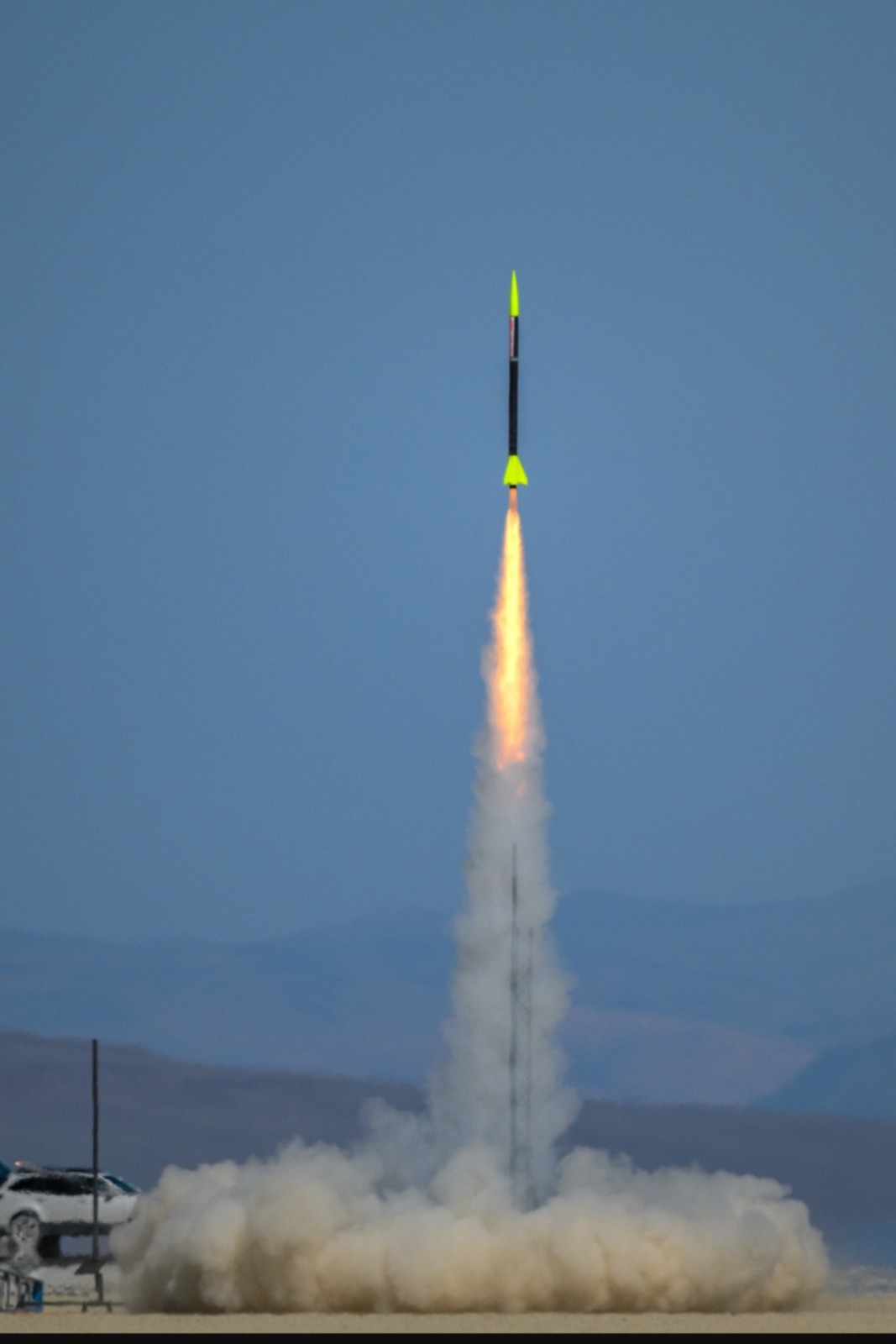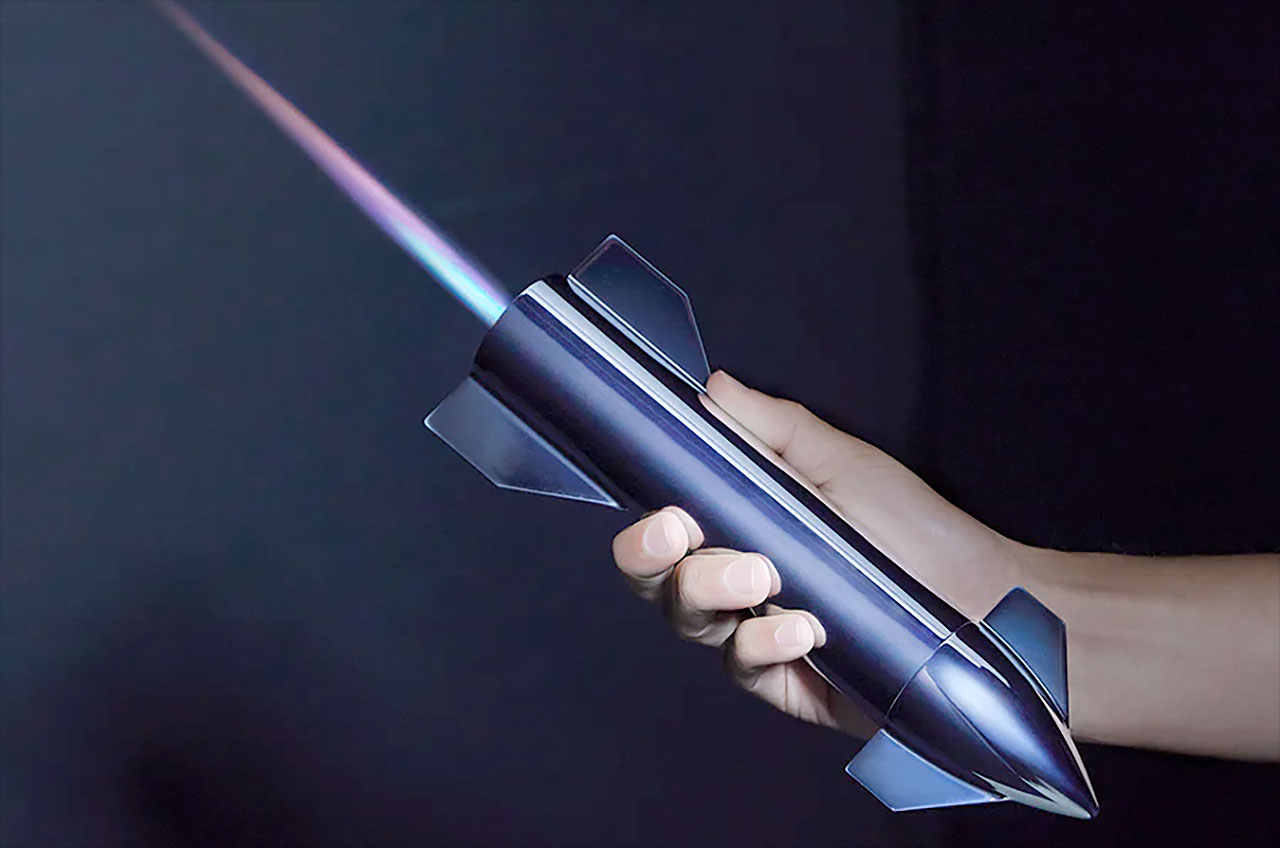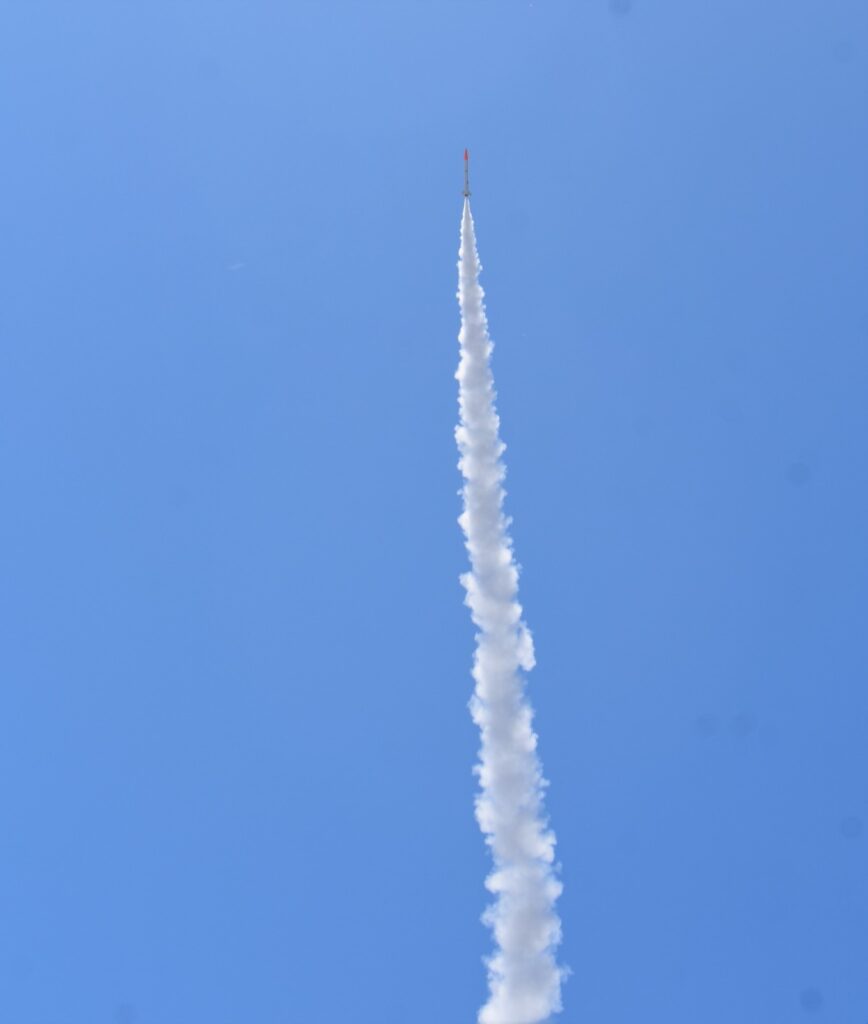Unleash the science and thrill of rocketry with our comprehensive insight into the world of model rocket engines!
The Basics of Model Rocket Engines
Model rocket engines are synonymous to the powerhouse for your miniature spacecraft. They deliver the thrust required to blast the rocket off, defining how high and how speedily it propels.
Breaking down the fundamentals, these engines operate on solid fuel. The process involves an intriguing interplay between various components including the nozzle, propellant, delay element, and ejection charge to ensure flawless launches and recoveries.
What is a Model Rocket Engine?
A Model Rocket Engine is a critical component that propels a model rocket into the skies. Often a tubular device, it generates thrust by ejecting stored matter at high speeds.
Harnessing Newton’s third law, Model Rocket Engines transform scientific principles into thrilling, high-velocity launches, bringing the ecstasy of rocketry right into your hands.
With the exclusive purpose of launching model rockets, these engines serve as the heart and soul of your cherished hobby. Providing the necessary propulsion, they’re responsible for achieving those spectacularly high launches.
But what exactly is a Model Rocket Engine? Think of it as a miniature version of the engines that propel full-size rockets, encapsulating strong principles of rocketry within its compact design.
These engines operate on the principle of action and reaction based on Newton’s third law of motion. As rocket propellant is rapidly burnt, combustion gases are expelled downwards creating an upward force.
Model Rocket Engines are, therefore, the epitome of engineering and scientific marvels in miniature. They turn the dream of sending a rocket into the sky into a reality, putting the thrill of liftoff in the palm of your hands.
Components of a Model Rocket Engine
Model rocket engines, despite their small size, pack some complex mechanisms. The components vary depending on the type of engine, but they all share some basic elements to ensure function and safety.
- Combustion Chamber: This is where the rocket fuel burns to produce thrust.
- Nozzle: This is responsible for directing the hot gases out of the engine to provide upward thrust.
- Igniter: This is the small device that initiates the engine combustion process.
- Delay Element: This component, when burned, provides a timed delay before the ejection charge.
- Ejection Charge: Activated after the delay, this propels the recovery system out of the rocket.
- Propellant Grain: This is the solid rocket fuel that combusts to create thrust.
Different Types of Model Rocket Engines
Dive into the diverse world of model rocket engines, understanding their differences to select one that fits your needs is essential. From single-use to reloadable, each offers unique features and functionality.
- Single-Use Engines: Ideal for beginners, easy to use and budget-friendly. You simply ignite them once and discard after flight.
- Reloadable Engines: A go-to choice for many hobbyists, they allow you to replace just the fuel grain between each launch, offering a re-usable casing.
- Hybrid Engines: Reserved for the more advanced hobbyists seeking an extra layer of complexity and power. Combining the best of both liquid and solid-propellant engines.
Understanding Thrust and Impulse
A model rocket engine’s power is determined by two crucial factors: thrust and impulse. Essentially, thrust is the engine’s raw power output, while impulse accounts for the duration this power boost is active, affecting the rocket’s peak altitude.
Thrust and impulse collectively give the model rocket engine its momentum, acting in perfect synergy. The force of thrust propels the rocket skyward, while impulse takes over, sustaining thrust beyond the initial launch, ensuring the rocket maintains altitude and trajectory.
Choosing the Right Fuel for Your Model Rocket Engine
When selecting the appropriate propellant for your model rocket engine, a comprehensive understanding of the types and properties is essential. From black powder and composite propellants to hybrid and liquid fuels, each comes with its unique strengths and considerations.
Optimizing your rocket’s performance lies heavily on your fuel choice. The perfect fuel must balance between power output and burn time, but bear in mind safety and availability. Do not hesitate to experiment with different combinations, but always prioritize safety precautions.


Types of Rocket Fuels
Model rocket engines can be fueled by different types of propellants. The primary types include black powder and composite propellants, each offering varying performance and functionality.
- Black Powder Fuel: Traditional choice for many model rocket enthusiasts due to its affordability and ease of use, but it often produces less thrust compared to other options.
- Composite Propellant: Offers a greater thrust and longer burn time compared to black powder, making it ideal for heavier, high-performing model rockets. However, it could be more expensive.
- High-Powered Rocketry Fuels: Used in larger hobby rockets, these can include Ammonium Perchlorate Composite Propellant (APCP), Potassium Nitrate and Sorbitol-based mixtures, or even Liquid Fuel combinations for the most ambitious enthusiasts. Future exploration into alternative fuels is a thrilling prospect!
- Experimentation: By testing different fuels or combinations thereof, you can tweak performance elements such as thrust, burn speed, and ignition temperature to optimize your rocket engine.
Factors to Consider When Choosing Rocket Fuel
Selecting suitable rocket fuel is a crucial task that directly impacts your model rocket’s performance and altitude achieved. Beyond the obvious considerations of cost and performance characteristics, there are several other essential factors to keep in mind.
- The Availability: Some fuels are harder to source than others, depending on the location.
- The Burn Rate: Different fuels burn at different rates which impacts the thrust time.
- The Safety: Some fuels are considerably more volatile and riskier to handle than others.
- The Environmental Impact: Certain fuels can have detrimental impacts on the environment and wildlife.
- The Legal Restrictions: Depending on your location, there might be laws restricting the use of certain fuels.
Safety Precautions for Handling Rocket Fuel
Handling rocket fuel for your model rocket engine comes with its fair share of risks; however, adhering to safe fuel management practices can minimize any potential hazards.
- Avoid skin contact with your model rocket fuel at all times. Protective gloves are mandatory.
- Always store rocket fuel in a cool, dry and secured location away from flame sources.
- Do not attempt to mix different types of fuels unless you are thoroughly educated on their reactions.
- Start with small quantities when experimenting with new types of fuels.
- Ensure your workspace is well-ventilated and equipped with fire extinguishers.
- Never leave your rocket fuels unattended, particularly when in an unstable state.
- Dispose of any remaining or unused fuel appropriately according to local regulations.
Building and Testing Model Rocket Engines
Venturing into the world of model rocketry in 2023, DIY enthusiasts are increasingly crafting and testing their own model rocket engines. With the right tools and materials, building these miniaturized thrust powerhouses can be an exhilarating and educational experiment.
A model rocket engine build involves a meticulous process, starting from diligent construction to precise testing. Aspiring rocketeers can immerse themselves in hands-on experience, grasping the engineering brilliance behind these micro propellers while exploring rocket science in a minuscule yet significant format.
Testing is the final frontier in building a model rocket engine. It’s not just about confirming that your engine works, but also understanding how well it performs. It requires a careful evaluation of metrics like thrust, specific impulse, and burn time, paving the way to maximum flight satisfaction while conforming to safety norms.
Tools and Materials Needed
Crafting a model rocket engine requires a few vital tools. A good rocket engine assembly kit often includes pliers, screwdriver sets, allen wrenches and a sturdy metal ruler for precise measurements.
Quality in your tools is paramount to successful engine assembly. Solid, durable tools can ensure your measurements and attachments are professional-grade.
When selecting gear for your build, less might be more. Rather than a substantial array of tools, focusing on a few high-quality, specialized options can improve efficiency and final output.
A good soldering iron is necessary for adhering any connections securely. This tool, combined with a durable pair of safety goggles, ensures a safe, secure build process.
Lastly, invest in a solid workbench. A stable, well-lit workstation is fundamental to any successful model rocket engine project. This provides a safe, organized space for construction.
Step-by-Step Process of Building a Model Rocket Engine
The meticulous task of building a model rocket engine begins with perfecting the blueprint. This frame of action is vital for accurate assembly and ensuring the engine’s functionality and safety.
To transition from blueprint to reality, you’ll meticulously assemble parts and ensure they fit with exacting precision. You’re not just crafting a model rocket engine; you’re shaping a marvel of modern engineering.
The next step involves carefully inserting the chosen rocket fuel. It is at this point the project becomes more than a collection of parts; it’s a potential powerhouse of thrust and speed.
Finally, before you launch your rocket, comprehensive testing is crucial. This process establishes reliability, identifies any potential flaws, and gives assurance on the engine’s performance. Remember, success lies in precision, patience and practice.
Running Tests and Evaluating Performance
Testing a model rocket engine starts with a simple static fire test on a secure stand. It’s essential to measure the thrust output in real-time, which reveals the burn time and the total impulse generated. This process provides the necessary data to tweak and optimize thrust efficiency.
The next step is to launch a test flight. Observing the lift-off, flight trajectory, and overall flight stability are critical parts of assessing your engine’s performance. Always confirm if it is able to power the model to the desired altitude.
In-depth analysis of launch data is vital. It can indicate if tweaks are needed, whether the engine is under-powered or over-powered, or if your ignition method is reliable enough. This comprehensive review contributes significantly towards fine-tuning the rocket’s ascension.
Never skimp on safety measures during testing. Your rocket’s performance evaluation must strike a balance between achieving optimal flight and adhering to the best safety standards. Building the best performing engine is about precision, patience and a meticulous regard for safety.
Upgrading Your Model Rocket Engine for Maximum Performance
Pushing limits to maximize performance yields thrilling results. Enhancements such as supplementary stages, effectively utilizing available thrust, or even modifications to the engine’s layout can provide significant boosts to your model rocket engine’s performance.
To go beyond your engine’s blueprint means to enhance its thrust potential. Experimenting with different fuel types and combinations, or optimizing the exhaust nozzle design can lead to increased velocities, elevating your rocketry experiments to new heights.
Optimizing Thrust and Impulse
For a surefire way to maximize thrust and impulse, consider the mass flow rate and exhaust velocity of your engine. Altering these factors can help break barriers and shoot your model rocket higher than ever before.
Understanding and improving impulse is key to getting more thrust. Experimenting with various nozzle designs, propellant compositions and chamber pressures can aid in enhancing the overall performance of your model rocket engine.
Experimenting with Different Fuel Combinations
Innovation fuels the world of model rocket engines. Experimental fuels are a hot topic, taking the potential for thrust and performance to new heights. They introduce thrilling aspects of unpredictability and discovery.
Exploring different fuel combinations is a daring endeavor. However, it’s crucial to tread with caution – while one blend may increase engine performance, others could lead to failure or even explosive hazards.
Blending fuels isn’t about random experimentation. It’s a methodical process of trial and error, driven by scientific principles and a deep understanding of chemical reactions and combustion processes.
Finally, documenting your fuel compositions and outcomes enables learning and helps tailor a unique fuel blend suited for your specific model rocket engine. This pursuit of the perfect combination brings thrill and excitement to the hobby.
Modifying Engine Design for Better Efficiency
A transformation is afoot within the world of model rocket engines to enhance efficiency. Adventurous hobbyists and engineers are developing modifications to engine designs, optimizing both fuel consumption and thrust.
Innovation runs rampant in the arena of engine design. Striving for superior performance, enthusiasts are optimizing nozzle designs, revisiting the role of combustion chambers, and even experimenting with hybrid solid-liquid fuels.
These design transformations and innovative approaches are contributing significantly to more powerful, reliable, and efficient model rocket engines. The future of this beloved hobby looks filled with roaring thrusters and an even higher ceiling for exploration.
Safety Considerations for Model Rocket Engines
The allure of model rocketry often dampens the awareness of its potential hazards. Safety is not just a consideration—it’s an integral part of the hobby. Correct handling, storage, and transport of rocket engines significantly reduce risks, making the exhilarating venture of rocketry a safer pursuit.
When safety regulations are followed diligently, rockets gracefully take flight and touch down without a hitch. Whether it’s ensuring a clear launching area, adopting safe recovery measures, or being prepared for unforeseen circumstances with a fire extinguisher, safety on ground warrants just as much attention as the thrill of the journey skywards.
Safe Launching and Recovery Practices
Assure a secure liftoff by selecting an open field, free of flammables. Your launch site should be clear of crowds and power lines, ideally with a radius of 400 feet for optimal safety.
For a safe recovery, deploying a recovery system such as a parachute or streamer is essential. These systems decelerate descent, reducing rocket damage and risk of harm upon landing.
Consider wind conditions at launch. Winds over 20 mph can reduce stability during flight and affect recovery device deployment—potentially landing the rocket outside the launch area.
Practicing countdown before launch enhances safety. A final check of the surroundings to confirm the area is clear and readiness of the recovery system is pivotal in secure launch scenarios.
Post-launch, be cautious approaching the landed rocket. Keep a safe distance until it’s stopped smoking and cooled down. This prevents damage and injury from hot engine parts.
Storage and Transport Safety Measures
When storing your model rocket engines, ensure they are kept in dry, cool places away from light or heat sources. A designated, locked storage option keeps them safely away from children or pets.
The transport of model rocket engines should be done consciously, ensuring they are not subjected to strong impacts or extreme temperatures. Securely packed and properly labeled boxes ensure a safe transition from storage to launch site. Remember, safety first!
Fire Safety and Emergency Preparedness
Emergency preparedness is paramount in rocketry. Conduct test flights in open spaces, away from dense crowds or structures. Always have a safety plan in place, ensuring everyone knows how to act in case of a misfire or another unexpected incident.
Proper fire suppression techniques are essential for rocket enthusiasts. Be prepared to handle unexpected propellant combustion, which includes having fire extinguishers and first aid kits within easy reach at the launch site.
Flying model rockets safetly also mandates frequent inspections. Regularly scrutinize your gear for any signs of wear or damage, as negligence can quickly lead to accidents. Remember, a safe launch always starts with a well-maintained engine.
Securing your launch area is crucial. Ensure the area is clear of any flammable materials and is as far away as possible from residential areas and buildings. It’s also best practice to inform local authorities of your rocket launch day.
Ultimately, safety is paramount. Be responsible – having thorough emergency procedures in place not only guarantees your safety but also keeps the fun aspect of the hobby intact. After all, model rocketry is about exploration and excitement, not risks and hazards.


How much does a model rocket engine cost?
If you’re a model rocket enthusiast or just someone looking to delve into the exciting world of rocketry, one of the questions that might be on your mind is: How much does a model rocket engine cost? Well, my fellow rocketeers, I’m here to provide you with the answer you’ve been eagerly waiting for.
The cost of a model rocket engine can vary depending on various factors such as the size of the engine, its power, and the manufacturer. However, on average, you can expect to pay anywhere from $5 to $20 for a single model rocket engine.
Now, before you start worrying about the expenses, let me assure you that the price is well worth it for the thrills and excitement you’ll experience. These tiny powerhouses of propulsion are the heart and soul of your model rocket, propelling it into the sky and providing you with an adrenaline-pumping spectacle.
When it comes to purchasing model rocket engines, you have numerous options available. There are several reputable manufacturers in the market, renowned for producing reliable and high-performance engines. Some popular names include Estes, Aerotech, and Quest Aerospace, among others. Each manufacturer offers a range of engines with varying power levels and sizes to suit your rocket’s needs.
It’s important to note that model rocket engines are typically sold in packs, which include multiple engines. This allows you to enjoy multiple launches without having to make frequent purchases. The number of engines in a pack can vary, with packs typically ranging from


